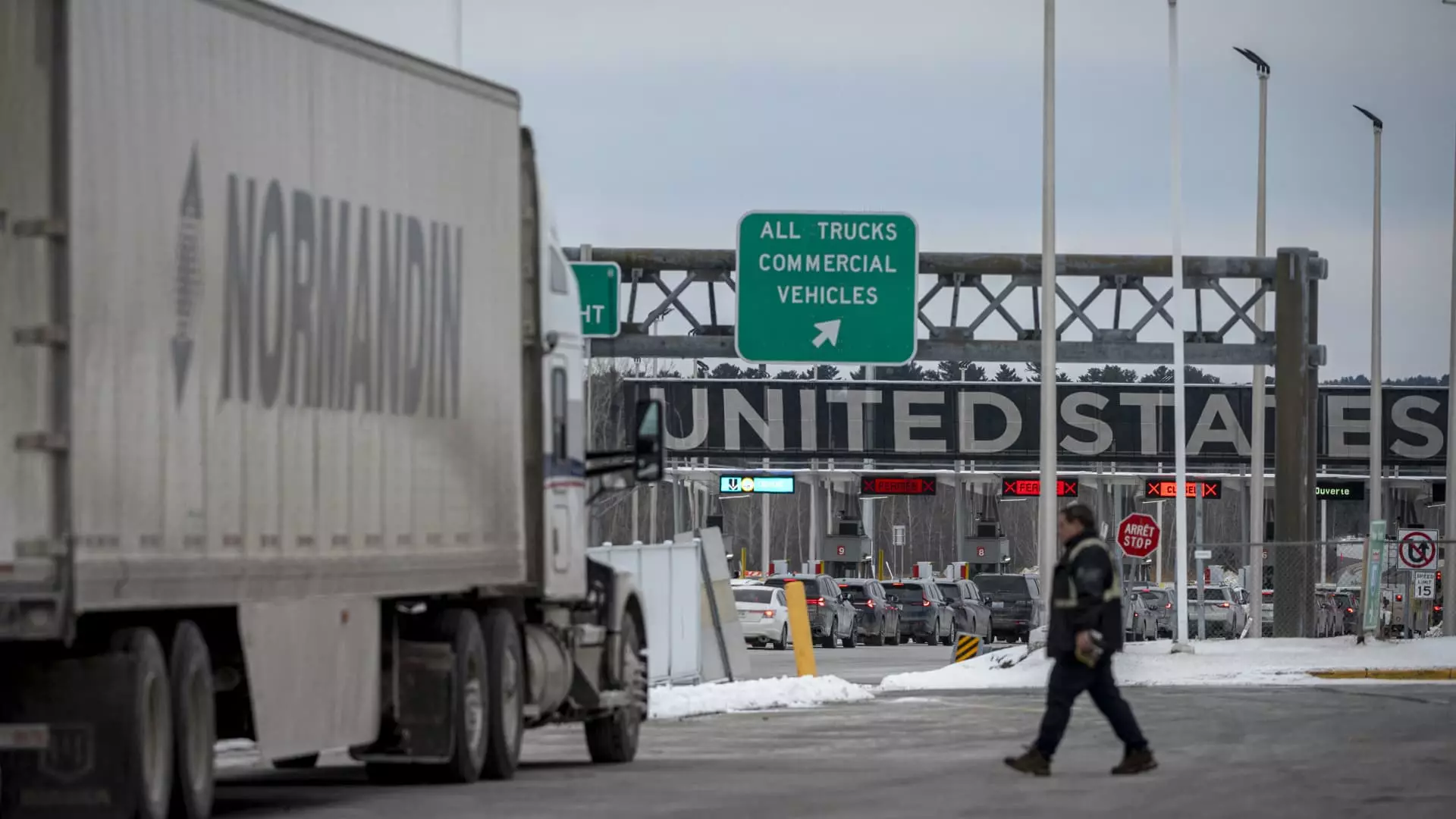As the global economy adjusts to shifts in trade policies, recent decisions by the Trump administration to impose significant tariffs have triggered a cascade of forecasts from economists and financial analysts alike. Following the signing of executive orders that set in motion 25% tariffs on imports from Canada and Mexico, alongside a 10% tariff on Chinese goods, the implications for U.S. consumers and the economy are profound. These tariffs could be more than just a pivotal moment in U.S. trade; they may also define the economic landscape for the foreseeable future by influencing inflation, interest rates, and consumer behavior.
The immediate impact of these tariffs is expected to be felt in consumer prices. Economists predict an uptick in inflation rates as the cost of imported goods rises, creating a ripple effect that touches everything from everyday household items to larger durable goods. The projected increase in U.S. inflation rates, estimated between 0.5 to 1 percentage point through 2026, poses a significant challenge to economic stability. For instance, as the Federal Reserve aims to maintain a delicate balance between inflation control and economic growth, these tariffs could hinder any potential for interest rate reductions.
The Federal Reserve’s benchmark interest rates directly influence the borrowing costs of consumers—rate changes can alter the landscape of credit cards, mortgages, and loans. With inflation potentially surpassing targets, the Fed might find itself constrained, unable to pursue previously anticipated cuts to interest rates. This stagnation could prolong high borrowing costs, exacerbating financial strain for everyday Americans already grappling with inflated cost-of-living pressures.
Beyond immediate monetary concerns, the geopolitical undercurrents surrounding these tariffs introduce additional uncertainty. The fluid nature of trade negotiations, particularly the unexpected one-month pause on tariffs related to Mexico, illustrates how quickly the landscape can shift. As countries reposition themselves in response to U.S. tariff policies, global supply chains may be disrupted, which can have cascading effects on domestic production and employment.
This uncertainty leads to hesitation among businesses, complicating long-term planning. Corporations may delay investment decisions or hiring initiatives due to the unpredictability of future costs associated with imported materials. The essence of trade is stability; any perceived risks often lead to reduced economic activity, stunting growth.
The Federal Reserve now faces a quandary; how to navigate these turbulent waters while promoting a stable economic environment? While some analysts suggest that the tariffs might compel a rise in interest rates, others argue that the eventual economic slowdown driven by these tariffs may necessitate rate cuts.
For instance, a projected economic downturn, with estimates indicating a reduction in U.S. GDP by 0.5 to 1 percentage point through 2026, suggests that the tariffs might ultimately result in a contraction of consumer spending. The interplay between inflationary pressures and GDP growth creates a challenging scenario for policymakers, as they must utilize interest rate adjustments judiciously to steer clear of recessionary threats.
The recent tariffs implemented by the Trump administration mark a critical juncture in U.S. economic policy. The anticipated consequences—a potential escalation in inflation, a pause in interest rate cuts, and broader economic implications—create a complex web of challenges that must be navigated. As consumers cope with rising prices and the Fed grapples with its dual mandate of stabilizing prices while promoting maximum employment, the road ahead appears fraught with obstacles.
Ultimately, the effectiveness and long-term consequences of these tariffs will hinge on their ability to foster sustainable economic growth without disproportionately burdening consumers or stalling the economy’s recovery trajectory. Only with strategic foresight can policymakers hope to mitigate the potential adverse effects on American households and the global trade landscape. The unfolding narrative will require careful monitoring and adaptive strategies to ensure that the impact of these tariffs fosters an economy that benefits all participants in the marketplace.

